#native texas plants
Photo
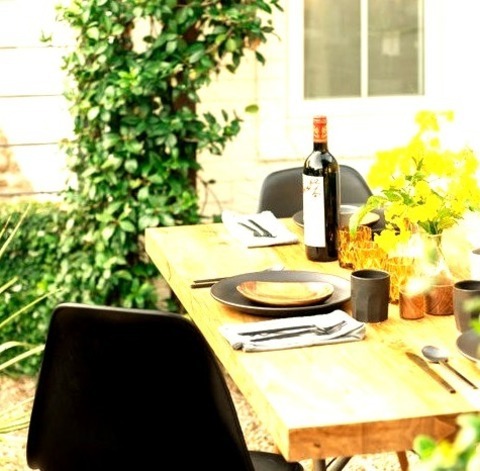
Vertical Garden Landscape
An example of a mid-sized contemporary full sun courtyard gravel formal garden in spring.
0 notes
Photo

Front Yard Gravel
Photo of a mid-sized modern drought-tolerant and partial sun front yard gravel landscaping.
0 notes
Photo

Front Yard - Gravel
This front yard gravel landscaping is an example of a mid-sized modern drought-tolerant planting arrangement.
0 notes
Photo

Modern Landscape in Dallas
An example of a mid-sized modern drought-tolerant and partial sun front yard gravel landscaping.
0 notes
Photo

Austin River Rock Landscape
An example of a huge southwestern drought-tolerant, desert and full sun hillside river rock landscaping.
0 notes
Text





2024 Growing Season
The start of my planting season is well underway. I'm pretty excited this year. I've moved some things around and building up other areas.
I repurposed a wheel barrow to be a garden container for my potatoes.
I moved my herb garden over to another bed and planted peppers in it's place. I planted red, yellow, and purple bell peppers. Closer to summer, I'll be planting okra - again. We are not a true fan of okra, but damn, it grows so darn well in our climate! I still need to move a few more herbs.
I organized my growing pots a little more. Set up a mulch bed to set them on. I'm growing cherry tomatoes, bush beans, cayenne hot peppers, some lettuce in the tiered pots, and my Meyer's lemon tree is blooming wonderfully - don't know if I will have lemons this year. But's it's still fun to grow it.
I moved my herbs to a small garden in a corner that get's a little more shade. The mistake I made last year was almost scorching my herbs because I placed them in a the wrong bed and had to use a shade net.
Something new I'm trying this year is a DIY olla watering system. I'm using terra cotta pots and a saucer as a topper. I'm using plumber's putty to plug the holes - but it's been a hit and miss as to how well it's working. My success rate is 50%. I'll keep trying.
I still have my blackberry bushes, they've been trimmed way back, but hope they bounce back soon.
Happy Gardening!!!
#green witch#garden witch#urban gardening#green witchcraft#texas garden#urban garden#garden#texas native plants#kitchen witch#witches of tumblr
7 notes
·
View notes
Text


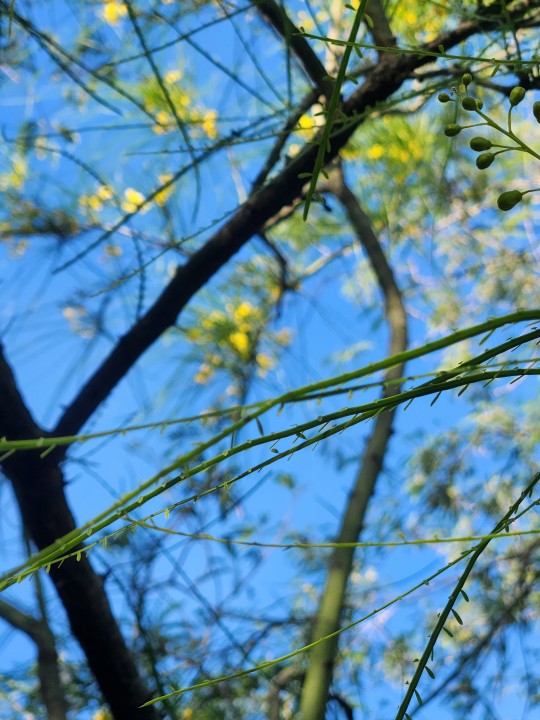
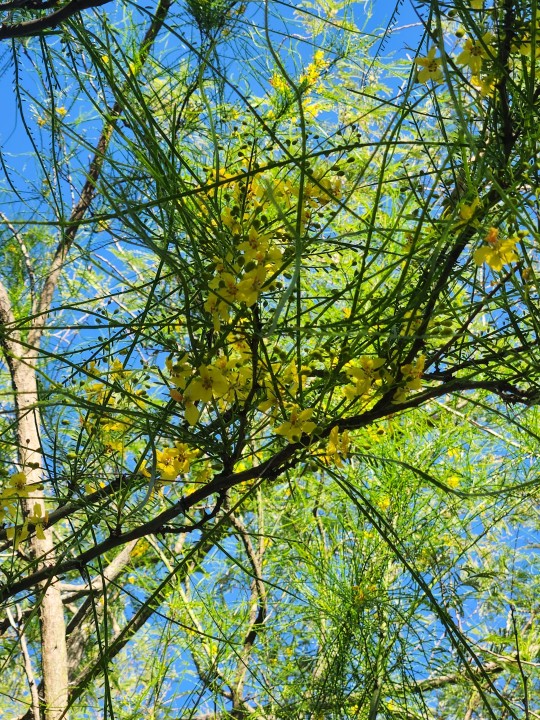
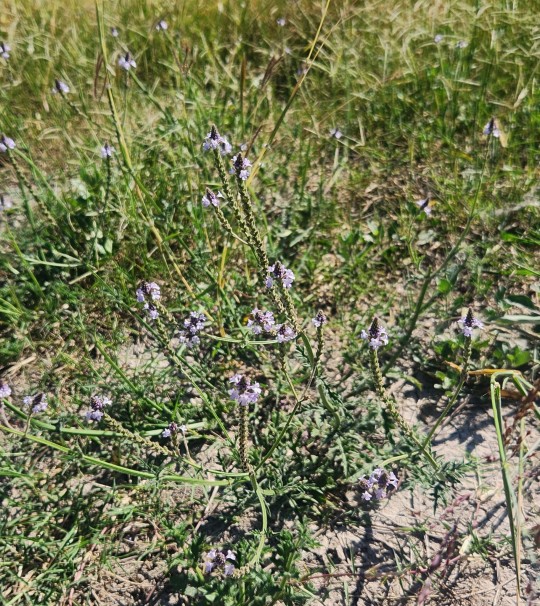

This past week I went for a walk with a dear friend of mine on this big nature trail in our city. We walked the 1 mile path twice, and saw lots of interesting plants and even some old, dried up Oyster mushrooms! We also saw a rabbit foraging in the underbrush! These are some of the plants that I saw and learned the identification of! I definitely plan to continue researching these beautiful plants <3
1 - 2 ) Texas Thistle (Cirsium texanum)
3 - 4 ) Mexican Palo Verde (Parkinsonia aculeata)
5 ) Texas Vervain (Verbena halei)
#nature#south texas#plants#herbalist#herbalism#hiking#texas wildflowers#wildflowers#spirituality#witchcraft#witchblr#Thistle#texas thistle#mexican palo verde#texas vervain#vervain#wellness#native plants
6 notes
·
View notes
Text
currently researching how to grow flax like a Normal person
#trying to find info on texas flax but all of the youtube videos are on european flax i think#which is fine but we're trying to mostly do native plants hmmmm
7 notes
·
View notes
Text
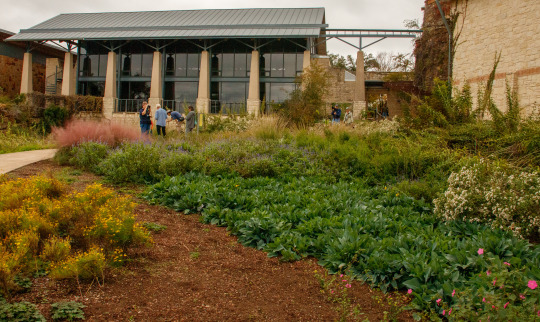
”Insects All Around Us” by Digital Edital Editor Kit O'Connell, originally published in the January/February 2024 issue of Texas Observer magazine:
Photography and additional reporting by Fall 2023 Reporting Fellow Paula Levihn-Coon.
The prey is already dying when the hunters arrive.
The sky is dark gray, the air thick with the threat of rain. But that hasn’t stopped over a dozen from gathering. They’re mostly, but not exclusively, older folks—frequently retirees with the ability to take a weekday morning off—and they’re armed with Digital SLR cameras and macro lenses.
Valerie Bugh crouches down over the squirming spots on the stone of the shady courtyard entrance to the Lady Bird Johnson Wildflower Center, prodding at the poisoned insects. Bugh, a gray-haired local naturalist, isn’t responsible for the state of these southern yellowjackets (Vespula squamosa), but she’ll take advantage of it for a photo opportunity. Someone on staff at the center discovered their nest and sprayed them just before the bug hunters arrived, and the entire hive is trickling out from their hidden home in a low rock wall. Bugh warns me to keep my distance from the females, who have fatter-looking bodies with stingers compared to the longer, thinner males, which normally only leave the nest for mating purposes. As I take a step back, she fearlessly kneels by their wriggling bodies, picking the males up and focusing her camera on each in turn.
“I’m trying to find one that doesn’t look dead,” she said. Soon, she’d even manage to document the hive’s queen as it haplessly tried to flee the toxins—a rare catch, though a grim beginning for a weekly ritual that largely focuses on the living.

Katherine Daniels and David Cook, volunteers, take insect photos.
Bugh is the author of 10 short fold-out pamphlets with color photos, with titles like Spiders of Texas: A Guide to Common and Notable Species and Unusual Insects of Texas: Caddisflies, Mantides, Lacewings, Walking Sticks, & More. That’s just one of her jobs: She’s also second clarinet in the Austin Opera. She’s modest about these accomplishments when asked—Bugh is too busy searching for bugs to brag about herself.
Every Thursday morning from February through mid-December, Bugh and her team of volunteers in the Lady Bird Johnson Wildflower Center Fauna Project explore a winding path, gradually aiming to cover the entire grounds over the course of a year, in order to inspect more than 650 species of native plants in the gardens and the 50-plus species of oaks in the Texas Arboretum for their occupants.
With this diversity of native plants comes a diversity in insect population too. Allowing for a few pandemic-imposed breaks and schedule changes, Bugh has otherwise been doing this consistently since 2010, during which time she’s identified almost 3,000 species of insect including over 50 bees, 345 flies, and over 500 different beetles. It’s not unusual to find a new species to add to the garden’s known tiny inhabitant list every week.
As Bugh gets moving, other bug hunters follow her in a pack. One by one and in pairs they break off from documenting spiders and beetles found clinging to the brick walls around the entrance and offices of the center. A few volunteer birders are also on-site, but for the most part, they work independently and seem invisible compared to the cheerful, chattering bug hunters. The group also documents signs of larger animals, from mammals to amphibians, but their main focus is on these tiny crawling creatures, since bugs are the most plentiful fauna present both in this garden and worldwide.

Every Thursday from 2010 to the present, Valerie Bugh leads the Fauna Project at the Lady Bird Johnson Wildflower Center in Austin, Texas.
The bug hunters move in a little cluster, calling out when they find something new for Bugh to examine. The salt marsh moth (Estigmene acrea) caterpillars are everywhere.
“If it’s a salt marsh, I don’t want to know about it,” declares Bugh dismissively, though with good humor. Their hairy bodies remind me of an asp, the caterpillar with a nasty sting. But they’re actually harmless to the touch. Bugh is just frustrated because there are too many of them. Unlike other caterpillars, the salt marsh moths will eat almost any plant, building its hairy cocoons all over.
“Every single plant is their host,” Bugh said.
By contrast, the Gulf fritillary (Agraulis vanillae), another caterpillar present in the day’s fauna count, subsists almost entirely on passion flower vines.
Bugh’s disdain for the salt marsh moth doesn’t stop her from plucking one from the greenery and posing for a photo with it. She’s happy to show off and talk about her fauna friends, even the overly common ones. As she moves around, her tone becomes more of a graduate lecture in entomology, no doubt similar to the insect walks she sometimes leads around Austin. Her volunteers are here to hone their skills at macro photography, to learn from a preeminent local expert, and to expand their naturalist knowledge. Many are members of the Texas Master Naturalist program.
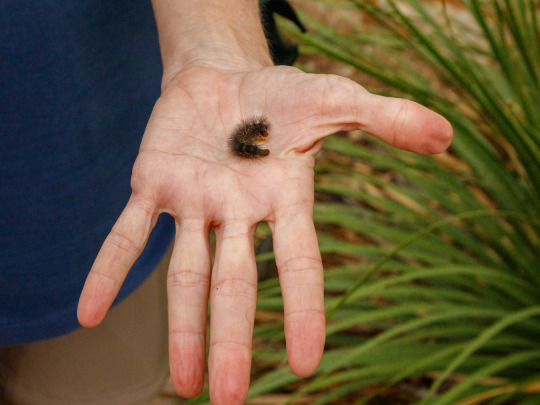
Valerie Bugh holds a salt marsh moth caterpillar (Estigmene acrea) in her hand.
But it’s a social occasion as much as anything, and the bug hunters talk among themselves around me, catching up on their lives. Two have just returned from African vacations and are excited to dish about all the great wildlife photos they got there, documenting large predatory wild beasts. But they seem just as eager to capture the living world’s small inhabitants in their lenses, too.
“It’s an insect safari,” said volunteer Katherine Baker, who told me she relished the challenge of macro photography after over a decade of experience in more general nature photography. She’s been helping count the fauna for about four years now, and always feels among kindred spirits here. But they all orbit around Valerie, returning to her for advice or an ID after wandering off.

Every Thursday for 13 years, naturalist and author Valerie Bugh, far left, has led volunteers in counting and photographing animals at the
wildflower center.
“Her knowledge surpasses everyone … she’s just amazing,” Baker said of Bugh.
The gray morning clouds are starting to burn off. As it warms up, the butterflies and others will begin to emerge from the foliage where they’re resting during the rainy, humid part of the day.
“Aha, here’s where the bumblebees are,” Bugh declares with delight as some are pointed out to her. “These are workers and look how docile they are, they’re barely moving.”
Even before the sun appears, I become aware of how the plants around us are full of life, more than first appears to the untuned eye. As I start looking at one insect, like the predatory leafhopper assassin bug (Zelus renardii), a leggy, long-bodied, hungry thing with a venomous proboscis, I spot another, smaller bug crawling along the same bit of wild grass. We allow ourselves to forget in our day-to-day lives, but insects are all over, constantly surrounding and outnumbering us.
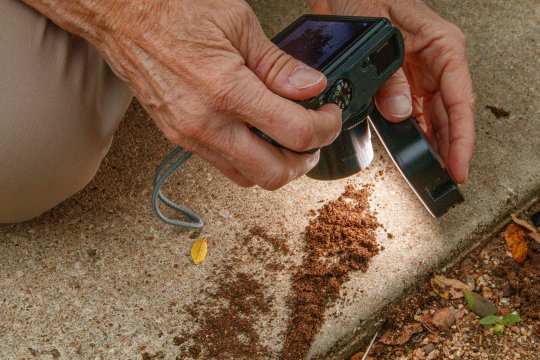
Valerie Bugh shines a small LED light on an insect.
On the day we visited, the team spotted seven different kinds of grasshoppers, two types of katydids and one cricket. Hunters often spot the American bumblebee, Bombus pensylvanicus, which is thriving in Central Texas even as its numbers dwindle elsewhere. But lately, its Sonoran cousin (Bombus sonorus) has been showing up more and more in the bug counts.
“That doesn’t bode well for desertification,” Bugh told me. “We’ve had a lot of Western species moving in, birds too, which means the habitat is great for them and a little drier than we’re used to for everyone else.”
The naturalist bug hunters are strongly aware of the harm climate change has brought on our region, and there’s a bittersweet feeling to parts of the morning, a subtle sense that someday soon could be the last day one of these fauna appear in a count.
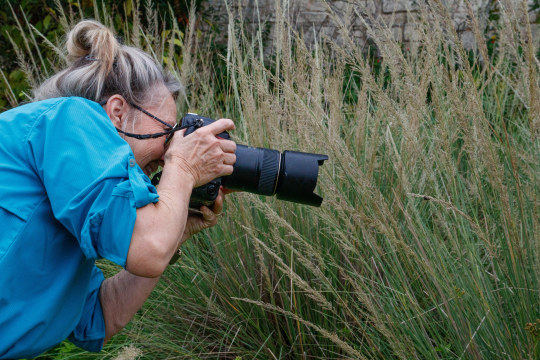
“The ecosystems are moving east, including tornado alley. It’s not great for the people in the way, and not great for us on the edge of deserts. Think of Austin without any trees. I really like trees,” Bugh says wistfully.
But most insects still spark joy when she spots them. As sure as falling leaves, the appearance of the scorpion flies (which are neither scorpions nor flies) represents the start of true Texas autumn, and they were just putting in their first appearances that Thursday in November.

Bugh can identify a great number of creatures on sight, but sometimes enlists help from collaborative internet forums and apps, or even, in one case, a book of Central American insects published in 1900.
Later, when I come home from the center, I pore over her very detailed homepage, which features a searchable spreadsheet of every creature identified by her team since 2010. I email Bugh to ask what changes she’s noticed over time.
“It is very hard to compare the past to the present since it is short term in geological time but very long term for humans,” she writes back. “Who can say what they’ve learned in over a decade? I bet it is a lot.”
#Austin#Texas#wildflowers#native plants#lady bird johnson#bugs#insects#photography#macro photography#wildlife#wildlife photography#fauna#science#entymology
2 notes
·
View notes
Text
Everyone loves a gardener. Get you a girl who can till soil and work on restoring native flora. Get you a boy who can grow strawberries and identify wildflowers with ease. Get you a partner who can plant four trees in one hour and tell you exactly what wildlife is going to come to your yard as a result.
Bitches love gardeners because they are strong and tender.
#karkat’s autistic rambling#batponiesrule28#gardening#farming#sorry I had to tear up#my dads old sod#because it’s dead#and I’m feeling pretty good about it#cuz I’m gonna be so sexy#and buff#and knowledgeable#about native flora and fauna#by the time I get this project rolling#you guys are gonna be so jealous#because I’m gonna plant#native Texas grass#and native wildflowers#and it’s gonna look so good
8 notes
·
View notes
Text
It's sooo not important I really just need to choose something, but I cannot think of what to make my webpage for this assignment about
#i was going to do native plants of texas but i think that would be difficult and more than this assignment requires#since id basically be having to do research on top of the coding lol#personal
4 notes
·
View notes
Text
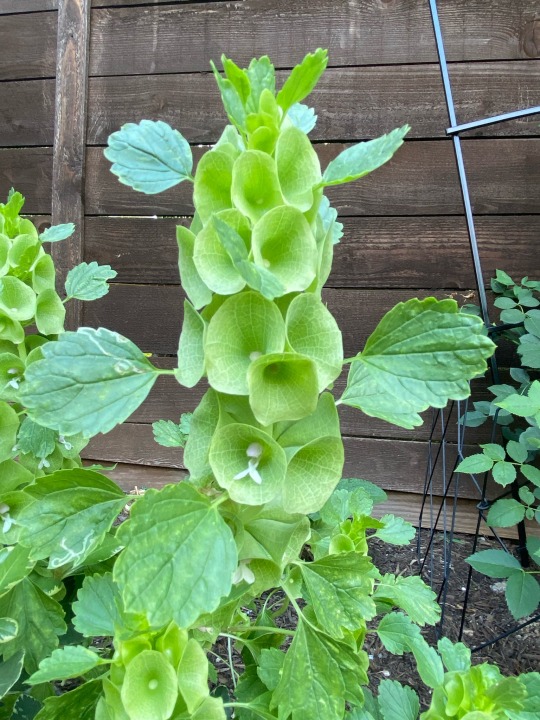
These are the Bells of Ireland btw. If you care.
#it’s a really primal plant it’s got thorns and shit it’s native to like. Syria.#also afaik these fuckers are such a bitch to germinate it won’t become invasive in north Texas but also I’m not on Reddit so idk#bells of Ireland
2 notes
·
View notes
Photo

Scientific Name: Lactuca floridana
Common Name(s): Woodland lettuce
Family: Asteraceae (aster)
Life Cycle: Annual
Leaf Retention: N/A
Habit: Forb
USDA L48 Native Status: Native
Location: Plano, Texas
Season(s): Summer
#Lactuca floridana#woodland lettuce#Asteraceae#annual#forb#native#Plano#Texas#summer#flower#blue#edible plants#plantblr
6 notes
·
View notes
Link
Texas farmers need to cultivate more desert trees, Eason says, because the demand currently exceeds the supply. As more homeowners take up xeriscaping, or drought-tolerant landscaping, garden retailers have struggled to keep up. A burgeoning poaching trade has filled the gap with cacti and succulents stolen from parks and private lands. Buyers as far away as Europe and Asia can end up with yuccas, agaves, and ocotillos uprooted illegally from southern North America and shipped overseas.
Yucca is a genus of mostly hardy desert plants known for their sharp, pointed leaves; some varieties bear white, bell-shaped flowers. There are about thirteen species native to Texas. Shoppers can buy yuccas on Amazon, eBay, and Etsy, but few sellers reveal the origins of their plants. And yuccas can be very profitable for growers. I called one nursery in California that was selling a six-foot-tall, fourteen-year-old yucca rostrata for $2,500, only to learn that the price was a discount for buying more than one. A single plant cost $3,000.
The unethical trade has thrived in Texas because of our state’s lax laws. Arizona and California have much stricter regulations when it comes to uprooting native plants. In Texas, if you have permission from a landowner to dig up a bunch of wild yuccas or agaves, there are no penalties as long as the species is not threatened or endangered. But Eason thinks this can pose problems for the land. The Chihuahuan Desert is home to about a third of the 1,500 known cactus species on the planet, and irresponsible harvesting endangers wild populations and disrupts complex ecosystems. “There’s a legal trade of wild harvested plants, but is it ethical?” he says. “No—we deserve to treat the land better.” It’s illegal to remove plants for commercial purposes from public lands, such as state and national parks, but it’s not as if Homeland Security has guards on watch around the clock to bust yucca thieves. The West Texas game wardens I spoke with said the penalty for poaching off private lands without a permit can amount to little more than a trespassing citation, carrying a fine of about $500 to $1,000 (up to $2,000 in extreme cases).
Yuccas are especially vulnerable. Because they can take a decade or more to produce seedpods in the wild, uprooting them can also severely hinder regrowth. With Big Bend Yucca Company, Riley is proving that it’s possible to grow yuccas ethically, legally, and profitably, without harming the environment. “I’ve seen truckloads of desert plants leaving the state,” Riley says. “If you dig up one of these plants, it’s done. It’s not coming back. It breaks your heart a little bit.”
7 notes
·
View notes
Text
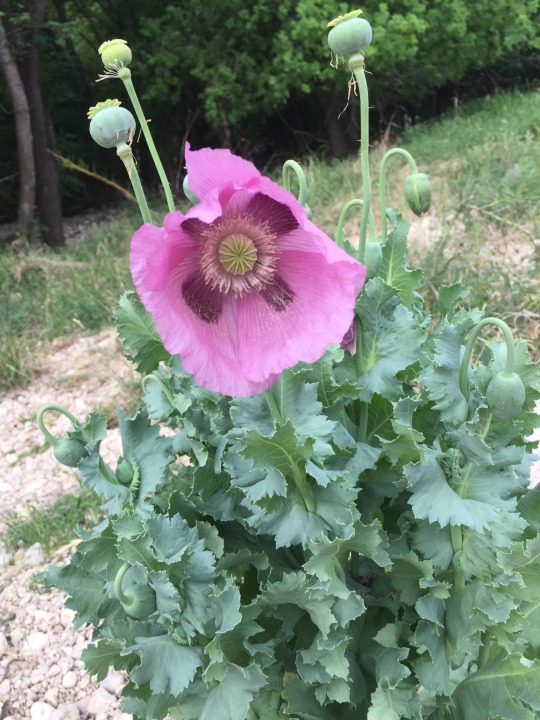
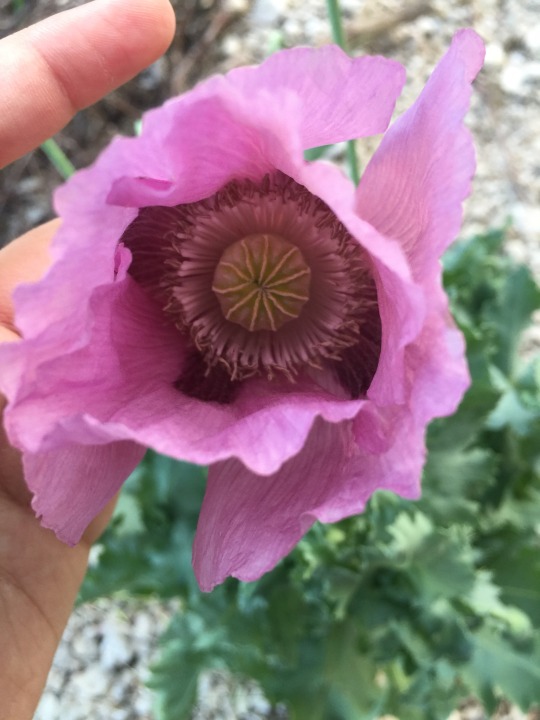





i’ve looked through hundreds, possibly thousands of texas wildflowers but i’ve been unable to identify this little fellow. if you have any help with IDing that’d be lovely! i will update this post to be more thorough once i learn more! happy earth month lovelies! :)
#texas foraging#texas wildflowers#north american wildlife#wildflowers#flowers#texas native plants#texas#southwest foraging
5 notes
·
View notes
Text





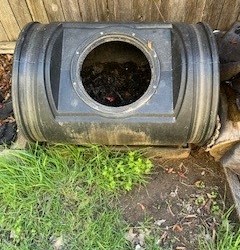
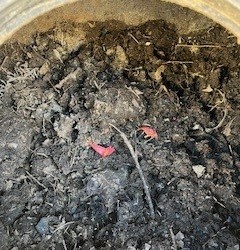
Composting
Composting is an art, so I've been told.
I grew up with composting. It was part of the daily chore list as laundry and cleaning dishes since I could walk. Come rain, shine, sleet, or snow. We dumped our kitchen scraps and yard waste in the compost.
I started with one compost. Open and surrounded by pallets. Now I have a few.
My process starts in the kitchen with a countertop compost that I fill on the daily and dump on the weekly. I add fruit, veggies, coffee grounds, houseplant trimmings. I refrain from using meat and meat discard.
I dump my kitchen compost into one of two closed containers. I have a black barrel that I roll every couple of days. It's considered a "hot" compost, because well, it's black and heats up. I also have a closed silver trashcan with holes in it. I use this for "layering" by dumping my contents and layering it. No turning. I stop adding to the black barrel when the decomposition becomes 50% complete.
I have an open screen compost for yard waste and I'm slowly retiring my old compost - or so I thought, then I decided to dig up an old bed to refresh it with new compost and to put the garden waste somewhere.
Ahhh...it really doesn't end.
Compost is like black gold to a gardener. it's so rich in nutrients and minerals. It completely amazes me that a banana peel can turn into black soil in 6-9 months. It's the base for all my gardening. i still amend by adding sand and shredded bark to allow for drainage.
So here's to the growing season in 2024
#green witch#garden witch#urban gardening#green witchcraft#texas garden#urban garden#garden#texas native plants#kitchen witch#witches of tumblr
4 notes
·
View notes